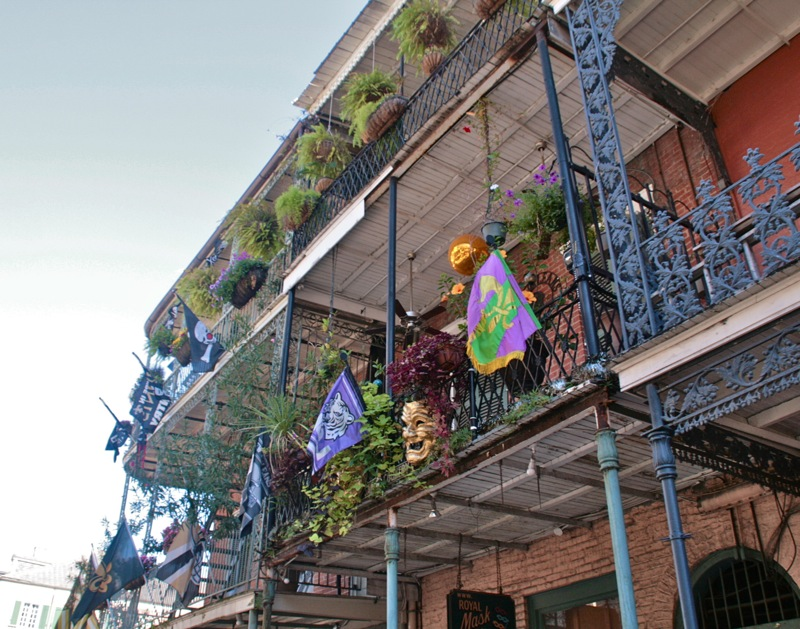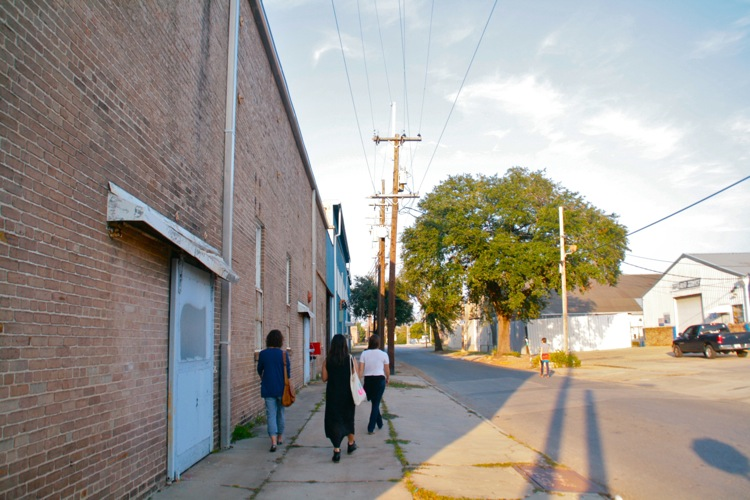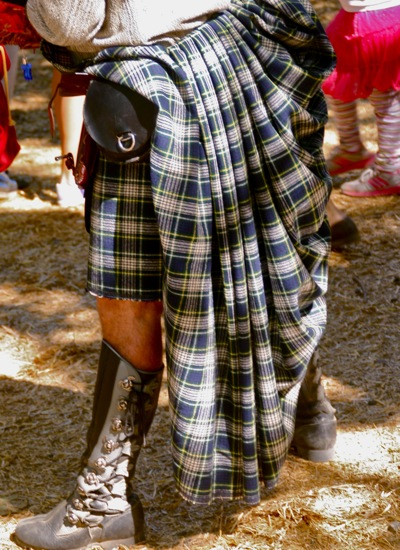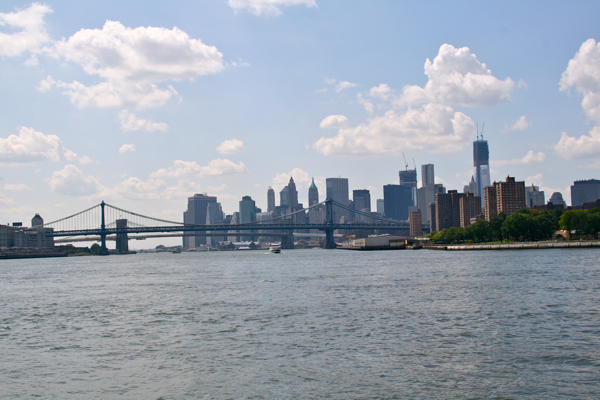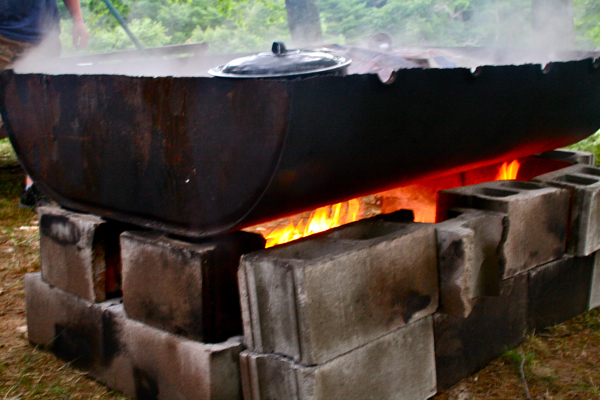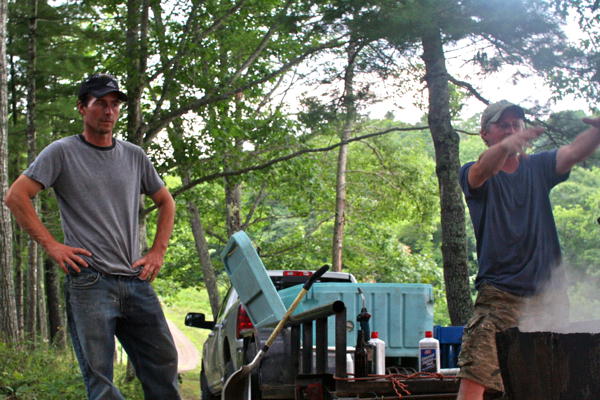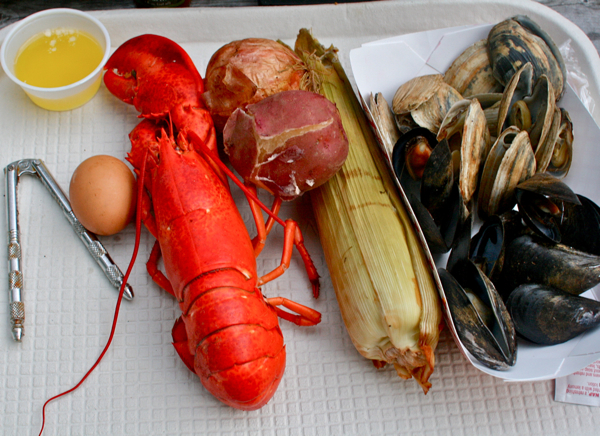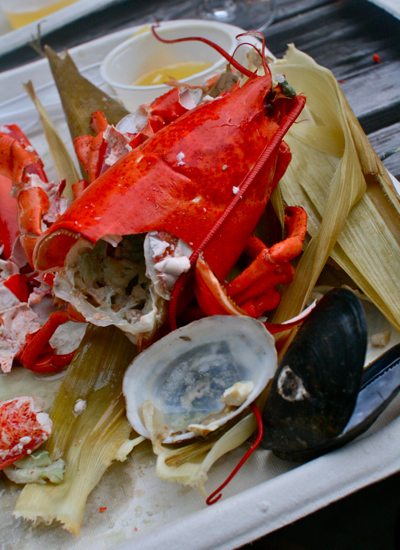So much of New Orleans made it a truly special place: its ornate iron-wrought balconies, its colorful additions of purples greens and golds decorating the city, its funny and virtually unintelligeable local dialect, its rich and completely self-preserved history, the Spanish moss draped over old oak trees throughout the city, the designation of “uptown” – in reference to upriver rather than any true North that I could point out on a map.
And, let’s not forget the local cuisine, so historically infiltrated with immigrant influences combined with seasonal local catch from the bayou and the nearby Gulf waters.
New Orleans is a city of leisure – much of the population is content to pass their days without a lick of work, only making efforts to eat and drink with friends and family. Minus the hurricane threat and huge percentage of welfare population, it’s much of what I imagine one version of heaven to be like.
Within the immediate city borders there are numerous options to grab ‘n go, ranging from beignets to muffulattas to hurricanes and New Orleans gin fizzes (made with milk! ick!). Then there are the restaurants, sprouting up one after another following Katrina’s aftermath, with a local epicurean fervor that I could have only dreamed of. Prior to this trip, a heated exchange of emails occurred not only planning a home-cooked Thanksgiving meal, but also figuring out where our dining options on Friday, Saturday, and Sunday were to be.
We settled on three of the hottest, culinariest (that’s not a word, I just made that up), and highly recommended restaurants in three corners of the city: Root, Cochon, and Maurepas Foods.
My favorite?
Hands down.
The Bywater section of New Orleans runs up against the Ninth Ward, and along with the Ninth Ward was one of the areas hit hardest during Katrina. It’s now a growing area of teeny tiny houses surrounded by large warehouses and a swampy waterfront view. On the night that we visited Maurepas, our cab driver got lost in the narrow streets of the neighborhood and overshot the restaurant by a few blocks. This would have typically been fine, but that night the air in the bywater smelled like some sort of burning sewage and was making me nauseous. Increasingly being referred to as the Williamsburg of New Orleans (read: hipster central), Bywater still had a far way to go before a complete gentrification was to be achieved.
We eventually arrived to what seemed like the only visibly lit corner of the neighborhood, with a yoga shop facing kitty-corner to the restaurant. Ahhh, the first sign of true yuppification, a yoga studio!
As soon as we walked into the restaurant, the smell of toxic tar was replaced by a welcoming warmth of food and conversation inside. Settling into Maurepas was quick and immediate. The host, though a bit over-the-top and intrusive, was nice enough, and sat us after a short 15 minute wait. The menu was something straight out of my dreamworld: heavy on vegetables and sides, mostly straightforward though with a few unique twists from around the world, and best of all- cheap. A simple appetizer $4-6. A side of greens $3. Main dishes $7-$12. Having such a beautiful menu come so cheap was a surprise to all of us who had lived in New York and Los Angeles.
Highlights of the evening included Whistle Pig rye whiskey for only $10 a pour!!!!!!!!! Beat that anywhere, and I’ll send you a check. Food-wise, I loved the side of greens, which was so simple but not overdone as you would find in most southern food restaurants. I was also a HUGE fan of the goat tacos. I tend to find goat a little too funky in flavor, but the meat in these tacos were mild and the corn tortillas lovely and soft, and the tacos were paired with a nice zesty green salsa. Yum.
Maurepas was BY FAR my favorite meal of the trip. In terms of dishes, ambience, and cost, and of course that order of Whistle Pig, it alone is a major reason to visit New Orleans.
Here is where I had the best meal in New Orleans:
Maurepas Foods, 3200 Burgundy Street, New Orleans, LA 504-267-0072 open everyday except Wednesday, 11am-2am
